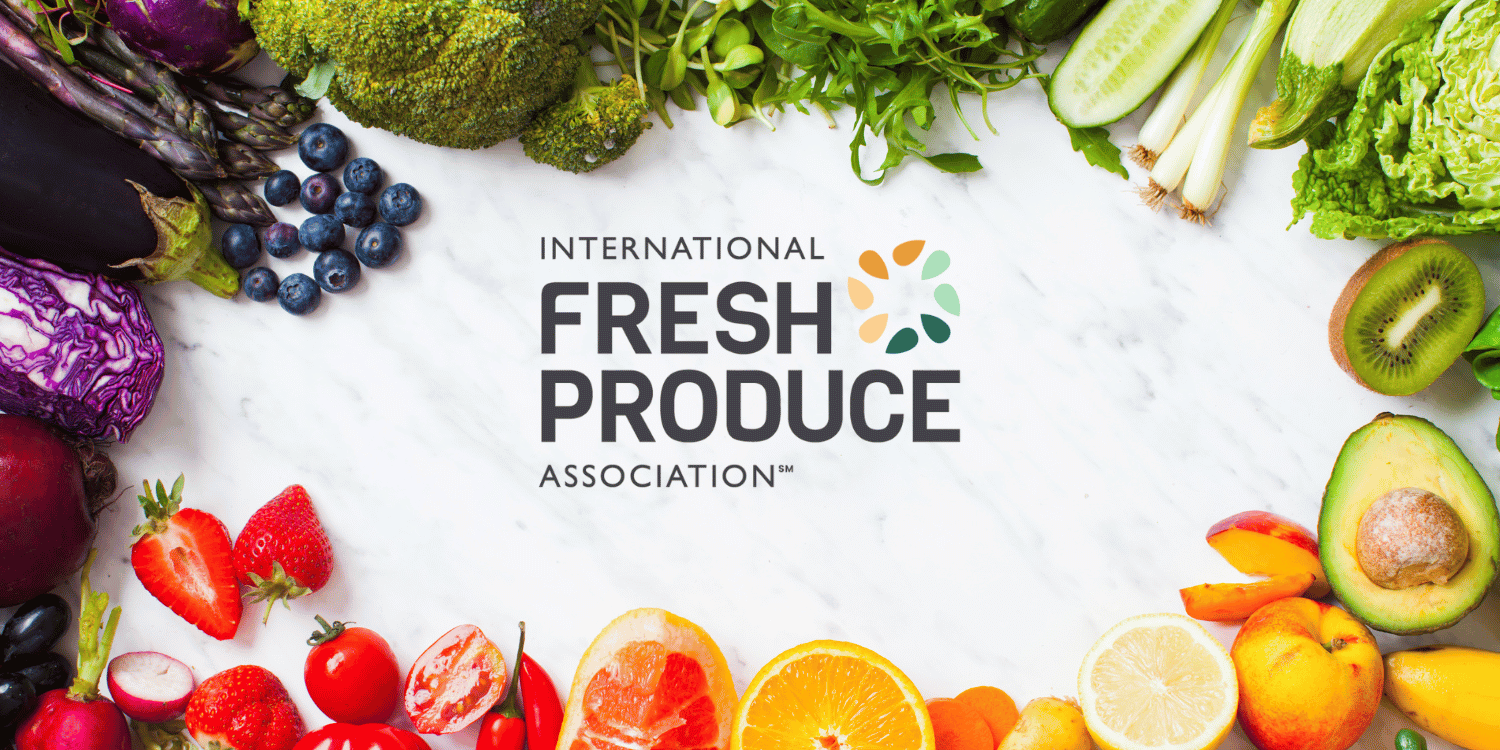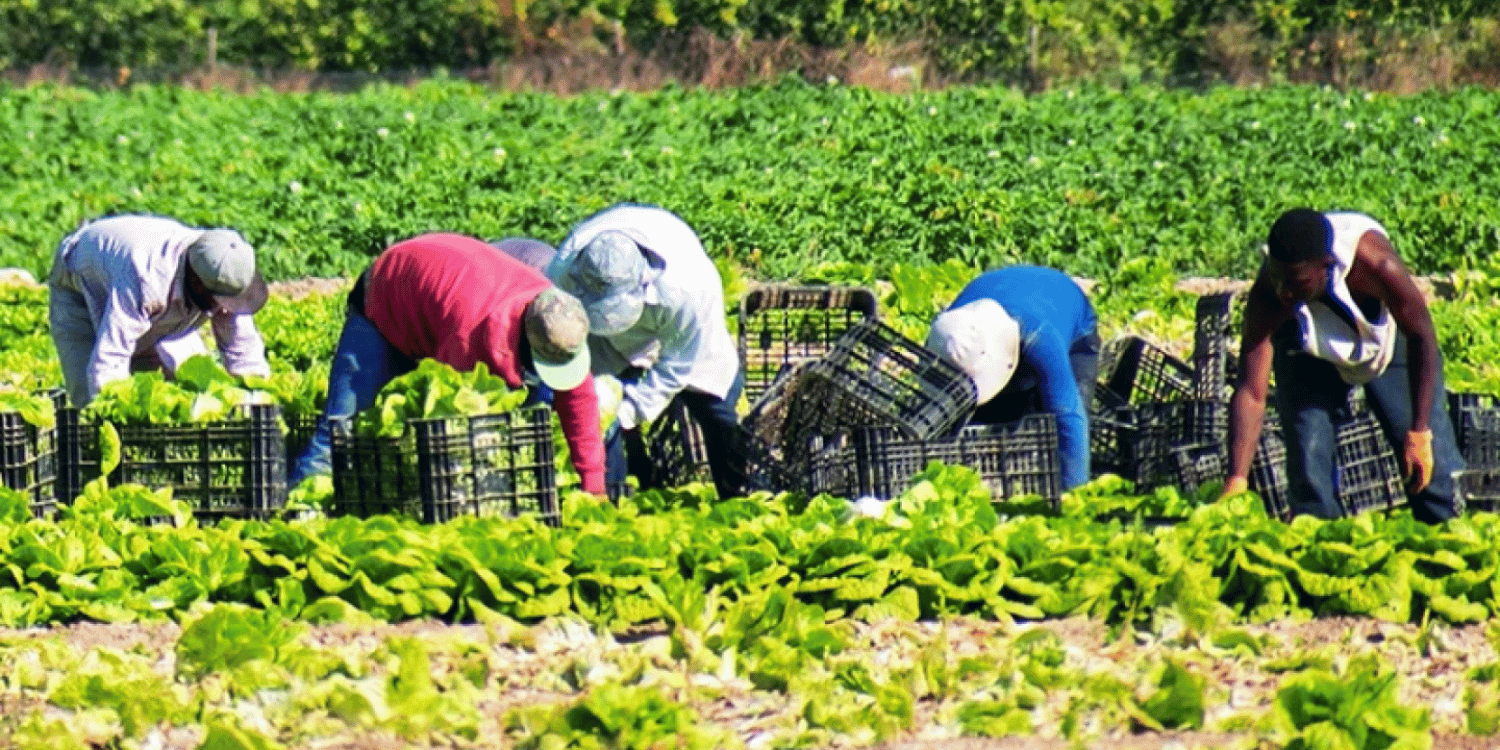Weather patterns significantly influence crop yield and quality through various factors.
Unfavorable weather conditions, such as drought or excessive rainfall, can stress crops, thereby reducing productivity and deteriorating quality.
Consistent weather patterns conducive to plant growth, which include adequate sunlight, warmth, and rainfall, can facilitate optimum crop yield and maintain quality.
On the other hand, unpredictable weather patterns such as sudden frosts can harm crops during sensitive growth stages, diminishing both yield and quality.
Moreover, extreme weather events, such as storms or heatwaves, can lead to crop failure, significantly impacting production output and quality.
Consequently, understanding and adapting to prevailing weather patterns is crucial for farmers to ensure consistent and high-quality crop yields.
- Favorable crop weather is determined by underlying weather patterns.
- Drought significantly impacts the yield of crops.
- Rainfall plays a crucial role in determining crop quality.
- Sunlight is fundamental for plant growth and crop yield.
- Sudden frost can have detrimental effects on crops.
Building upon these core factors, it’s crucial to acknowledge the nuanced effects of weather patterns on crop production.
In the following sections, we dig in into the unique roles and impacts that factors such as temperature cycles, wind patterns, and extreme weather events have on agricultural productivity.
By exploring this intricate interplay, you stand to gain a deeper understanding of modern farming challenges and the scientific considerations farmers must account for.
Stay with us as we unpack this fascinating world, revealing the symbiotic relationship between Earth’s weather and our food sources.
Contents
- What Determines Favorable Crop Weather?
- Impact of Drought on Crop Yield
- How Rainfall Affects Crop Quality
- Role of Sunlight in Plant Growth
- Effects of Sudden Frost on Crops
- How Extreme Weather Events Impact Crops
- Adapting Crops to Weather Patterns
- Achieving Consistent, High-Quality Crop Yields
- The Bottom Line
What Determines Favorable Crop Weather?
In Short: The success of agricultural yield heavily depends on various weather-related factors such as moderate temperatures, ample sunlight, appropriate rainfall, gentle winds, and diminished pest incidence. However, optimal crop-growing climate varies by crop type, location, soil type and farming practices, and it’s the long-term weather trend, not the daily changes, that ultimately determine a crop’s success.
The perfect climate for farming doesn’t adhere strictly to universally pre-set conditions. Have you ever wondered why certain crops flourish in specific climatic conditions while others do not?
Essentially, the success of crop yield and quality is tied closely to a variety of weather-related factors. Different crops require different climatic conditions, but some generalizations can be made about favorable crop weather.
Firstly, the temperature plays a crucial role. Majority of crop-suitable climates have a moderate temperature. It’s important to note that extreme high or low temperatures can significantly affect the physiological processes of plants.
Sufficient sunlight is another crucial factor. The level of sunlight directly influences the photosynthesis process in crops, can we overlook its importance?
To tie these two factors together, here’s an organized list of key ideal weather requirements for crop growth:
- Moderate temperatures – Neither too hot nor too cold.
- Ample sunlight – To enable photosynthesis, the engine of plant growth.
- Adequate rainfall – Essential for the hydration and nourishment of plants.
- Less violent winds – Strong winds can physically damage crops and increase water loss.
- Low pest incidence – Enabled by weather unsuitable for pests and diseases.
Precipitation also has a big hand in crop growth. It provides needed water and is thus, essential for hydration and nourishment of plants.
Violent winds, on the other hand, can be detrimental. They can physically damage crops, accelerate water loss through evaporation and transpiration, and even spread diseases and pests.
Not every kind of weather is suitable for pests. If the weather conditions are not suitable for pests, the disease risk becomes less.
Likewise, seasons too have an impact on the farming calendar. However, it’s the long-term weather trend, not the day-to-day weather changes, that determine the success of a crop.
At the end of the day, there’s no single answer to what makes the perfect crop weather, as it varies by crop type, location, soil type and farming practices. However, farmers and agricultural scientists aim to seek a balance among these complex weather factors to provide an optimum environment for crops. Becoming attuned to these changing requirements is fundamental for future agricultural prospects, wouldn’t you agree?
Impact of Drought on Crop Yield
In Short: Drought profoundly impacts agricultural productivity by affecting crop yield and quality, with severe implications such as reduced germination rates, stunted growth, and decreased photosynthesis. Drought-stressed crops not only exhibit physical signs of stress but also compromise on taste, texture, nutritional content, and overall marketability.
In dissecting the intricate relationship between weather patterns and agricultural productivity, drought emerges as a significant factor. It not only affects crop yield but also influences the overall quality of these yields.
The parching effect of drought on crop yield is profound, isn’t it? It seems to exert substantial control over the success or failure of a farming season. Water is critical for plants. Would you believe it forms up to 90% of a plant’s weight?
As such, adequate moisture levels in the soil are necessary for optimal crop growth. They enable plants to absorb nutrients effectively from the soil. Moreover, water acts as a transportation system within the plant, facilitating movement of nutrients and other substances that are important to plant health.
In the face of drought, the availability of this essential resource is significantly hampered. Crops are unable to access the required water to sustain growth, in turn adversely affecting the yield.
Considering the severe implications of drought, it might help to examine some specific impacts further. Here is a brief exploration:
- Reduced germination rates: Drought conditions may result in the failure of seed germination or slower germination rates, thereby impacting yield.
- Stunted growth: With the lack of adequate water supply, crop growth becomes stunted and the plant may become more susceptible to diseases and pests.
- Decreased photosynthesis: Drought conditions may cause a decrease in photosynthetic activity. This implies a reduction in plant development and growth rate which lead directly to lower food production.
In addition to the impacts on crop yield, the quality of the harvest is also compromised. Crops often display physical signs of drought stress– wilting, leaf curling, and color changes, to name a few.
This negative impact on appearance alone can significantly reduce the marketability of the crop. Apart from this visual drawback, other important crop qualities such as taste, texture, and nutritional content can also be compromised under drought conditions.
Drought-stressed crops may exhibit reduced sugar content, leading to less palatable fruits and vegetables. Would you enjoy biting into a bland apple? Or how about cooking with flavorless vegetables? Probably not.
Pro Tip: To ensure optimal crop growth and maintain quality yield, it’s crucial to sustain adequate soil moisture levels as drought can hamper water availability leading to reduced germination, stunted growth, and impact taste, texture, and nutritional content of produce.
But it’s not only about tastes and preferences. Serious nutritional implications are tied to this as well. A decline in nutritional composition can lower the value of the produce and affect consumer health in the long run.
In essence, various factors are at play, as we dig in into the effect of drought on crop yield and quality. From the immediate, visible effects on plant growth to the less apparent, long-term impact on crop quality and nutrition– everything counts. Being well-informed on these aspects is imperative for a shared understanding of the complex interplay between weather patterns and agricultural output.
How Rainfall Affects Crop Quality
In Short: Rainfall significantly influences crop quality, either enhancing or reducing it depending on whether the rain is adequate, excessive or erratic. Farmers can respond to different rainfall scenarios by utilizing effective strategies such as drainage systems, irrigation, and pest management.
Understanding how rainfall influences crops can be quite fascinating, isn’t it? Proper rainfall can significantly enhance a crop’s quality.
But what happens when there’s either too much rain or not enough? These extremes can dramatically affect crop quality in a variety of ways.
For instance, excessive rain can dilute the nutrients in the soil reducing the overall nutritional value of the crop. On the other hand, inadequate rainfall might stunt plant growth and lower yields.
More subtly, rainfall irregularities can impede a plant’s ability to fight off pests and diseases. Who knew weather fluctuations could influence the health of a crop to such an extent?
Well, what’s interesting is that there are key crop strategies for different rainfall scenarios. Consider the example below:
- Excessive rainfall: Drainage systems can be used to prevent waterlogging.
- Insufficient rainfall: Farmers can resort to irrigation systems.
- Erratic rainfall: Pest and disease management techniques can be employed.
Now, understanding rainfall’s influence starts by recognizing the role of soil. Isn’t soil an essential component of a healthy crop?
Certainly, but also remember that heavy rainfall can lead to soil erosion, washing away essential nutrients. This can, in turn, lead to a considerable reduction in crop quality.
Mining into this a little deeper, excessive rainfall can also cause waterlogging. We can see waterlogging as a bane to many crops, as it hampers root growth and curbs nutrient uptake.
By the same token, there’s increasing evidence linking rainfall variability with the accumulation of harmful toxins in crops. Isn’t that something that could potentially affect the entire food chain?
No less important is the fact that rainfall affects crop timing. Adequate rainfall at the right time could be the difference between a successful harvest and a total disaster.
So now we should take note that the relationship between rainfall and crop quality is multifaceted. It’s not just a matter of ‘more rain equals better crops’ or vice versa, right?
Of course, having a broader sense of the effects allows farmers to make informed decisions regarding crop management. This in turn, secures a more reliable and healthier harvest.
Important: Proper rainfall can significantly enhance a crop’s quality, but too much rain or not enough can dramatically affect crop quality, with excessive rain diluting soil nutrients and inadequate rainfall stunting plant growth.
Let’s not forget that while rainfall is a key factor, it’s just one piece of farming’s intricate puzzle. Don’t farmers also meticulously harmonize many elements including sunlight, temperature, and soil composition, on their quest for a bountiful harvest?
Let me tell you, as we dig in into the nuances of how rainfall affects crop quality, we are also reminded of farming’s inherent complexity and diversity. Would you agree that this makes for a captivating discourse?
Role of Sunlight in Plant Growth
In Short: Sunlight plays an indispensable role in photosynthesis, providing the energy needed for plants to convert water and carbon dioxide into glucose – their life-sustaining fuel. However, balance is vital as both insufficient and excessive sunlight can negatively impact a plant’s growth and productivity.
Ever wondered about the importance of sunlight in plant growth? Sunlight, an indispensable player in the grand design of life, offers more than warm comfort.
Its role goes beyond heat generation. Notwithstanding the endless spectrum of sun’s contribution, ponder this—are plants truly solar-powered?
The answer shadows in the concept of photosynthesis, a natural yet complex process in plants. Much like a living solar cell, a plant converts sunlight into usable energy.
The sun’s rays provide the fundamental energy required to convert water and carbon dioxide into glucose, the life-sustaining fuel. This mechanism is integral to a plant’s growth and development.
Let’s look more deeply into
the stages of photosynthesis. The functionality of sunlight intertwines with each stage.
I’ve compiled a list to guide us through this intricate process.
- The light-dependent stage is where solar power comes into play.
- The energy from sunlight triggers the release of electrons from water molecules, generating oxygen as a byproduct.
- By combining these electrons with proteins, the plant induces energy-packed molecules of ATP, and NADPH.
This energy is then utilized in the light-independent stage, or the Calvin cycle. Here, the plant converts carbon dioxide into usable organic compounds—sugars.
These sugars, the principal product of photosynthesis, act as the key building blocks. They aid in maintaining a plant’s structural integrity and overall health.
But what happens if sunlight is inadequate or excessive? Both extremes can hamper a plant’s growth and productivity.
Insufficient sunlight can yield plants with lower rate of photosynthesis, resulting in stunted growth and lesser fruit production.
Contrarily, excessive sunlight can plunge the plant into a harmful state called photoinhibition. Too much sunlight inhibits photosynthesis, as it can damage the plant tissues.
Timing is also consequential. The early stages of plant growth are most demanding of extended daylight hours.
Keeping in mind these considerations, cultivators often calibrate their crop rotation and placement strategies in compliance with the sunlight’s availability and intensity.
Pro Tip: Ensure your plants receive adequate sunlight but in moderation, as both insufficient and excessive sunlight can negatively affect their growth and productivity.
Does it sound like plants have a complicated relationship with the sun? While sunlight is important for their survival, moderation is key.
In sum, it’s fascinating to see the essential interplay between the sun and plants. Just imagine—a world without sunlight would be a world silent of life’s rustle.
Effects of Sudden Frost on Crops
In Short: Sudden frost poses a significant threat to crops by freezing the water in plant cells and leading to tissue damage and rot. The impact varies between crops and their frost-resilience, with late frosts being particularly harmful, but farmers can combat these effects through frost-resistant varieties and certain farming methods.
When discussing the impact of weather patterns on crop yield and quality, sudden frost emerges as a significant factor. It is unpredictable and can strike even in the heart of the growing season, can’t it?
A sudden frost primarily poses a threat to the plant because it freezes the water within the plant cells. Do you know what happens next? The frozen water expands causing the cell walls to rupture.
This damages the plant tissue irreversibly, scarring the fruit or vegetables. To make matters worse, following daytime melting can lead to rot. Isn’t it fascinating, yet devastating, how quickly a frost can wreck havoc on crops?
Let’s run through the variety of ways a sudden frost can impact different crop aspects:
- It reduces yield by causing flowers to fall, reducing pollination rates, and killing young fruits.
- The developmental phase can be severely interrupted, including the ripening phase.
- It can compromise the quality of crops, making them unsuitable for the market or for following processing.
You might be thinking, ‘are all crops affected equally by a sudden frost?’ The answer is no.
Each type of crop has its own threshold temperature below which it will be damaged. Hence, some crops may be more frost-resistant than others, while others may suffer complete devastation even with a light frost.
Fruits such as peaches and cherries, for instance, can be extremely sensitive to frost. Alternatively, crops like winter wheat and rye are more resilient, able to withstand lower temperatures. Isn’t it fascinating how crop resilience can vary?
And what about the timing of the frost? Surely a late frost must be better than an early one?
On the contrary. Interestingly, a late frost can actually be more detrimental for crops. This is particularly true for fruiting plants that have blossomed early due to unseasonably warm weather. Can you imagine the disappointment and financial blow farmers face when frost destroys an otherwise successful harvest?
Important: Sudden frost is a significant weather pattern that can damage crop yield and quality, as it causes plant cell walls to rupture by freezing the water within them, reducing yield, interrupting developmental phases, compromising the quality of crops, and affecting each type of crop differently based on its threshold temperature.
For gardeners or farmers, it’s critically important to employ strategies that combat sudden frost. This could mean selecting frost-resistant crop varieties or implementing certain farming methods.
For instance, the use of frost blankets, wind machines or even sprinkler irrigation can help to combat the effects of sudden frost. Such methods may provide a lifeline for farmers in regions known for their unpredictable weather patterns. Let me tell you, it seems that suddenly frost isn’t entirely undefeatable, doesn’t it?
How Extreme Weather Events Impact Crops
In Short: Extreme weather events, including intense rainfall, hurricanes, droughts, heatwaves, and unexpected frost, can significantly impact crop yield and quality. The agricultural sector must understand these impacts and develop effective strategies and technologies, including drought-resistant and flood-tolerant crop varieties, to mitigate the effects.
Weather, particularly extreme weather events, plays an essential role in the growth and development of crops. When we think of our planet’s changing climate, what comes to mind?
For many, it’s the image of incremental temperature rise, a steady, gradual change. But that’s only half the story, right? The reality is an ever-increasing occurrence of extraordinary weather phenomena.
These extreme weather events, which include intense rainfall, hurricanes, droughts, and heatwaves, can be catastrophic for agricultural crop yield and quality. But just how much of an effect do they really have?
Crop health relies heavily on regular and predictable climate patterns. A sudden bout of intense rainfall, a prolonged period of dryness, or an unexpected frost can put tremendous stress on crops. Makes sense, doesn’t it?
Each crop has a certain threshold of tolerance. When weather conditions push them beyond this limit, the effects can be devastating.
Below, you’re going to find a few examples of how these extreme weather events can cause damage to crops:
- Heatwaves: Prolonged periods of high heat can lead to decreased photosynthesis, causing crops to wither and die.
- Droughts: Without adequate water, crops can’t perform necessary physiological functions, leading to reduced yield and quality.
- Floods: Intense rainfall and flooding result in soil and nutrient erosion, which can stunt crop growth.
- Frost: Unexpected frost can result in cellular damage in plants, impeding growth and development.
Understandably, these events lead to a decrease in crop yield, which in turn affects the livelihood of farmers and the food security of communities. Sounds concerning, doesn’t it?
Crops don’t just provide us with food, it’s worth noting that they also play a crucial role in other industries such as textiles and biofuels. Therefore, changes in crop yield and quality can have far-reaching effects.
Adapting to these extreme changes in weather patterns is a serious concern for global agriculture. It’s a challenge, isn’t it?
Pro Tip: To protect our future food security and maintain crop yield, it’s critical to invest in research and development of drought-resistant and flood-tolerant crop varieties to adapt to the rising frequency of extreme weather events.
However, with continued research and the development of drought-resistant and flood-tolerant crop varieties, there is hope for the future. But will it be enough to keep up with the escalating frequency of extreme weather events?
As we move forward, the objective is clear – we need to better understand the full impact of extreme weather on our crops, and develop effective strategies and technologies to mitigate these effects.
Adapting Crops to Weather Patterns
In Short: The increasing unpredictability of weather patterns dictates a necessary shift in agricultural practices, coaxing farmers and experts to adapt crops efficiently. This adaptation can be achieved through methodologies such as climate resilient crop varieties, improved irrigation, weather forecasting tools, agritech innovations, and increased adoption of crop insurance policies.
The variability of weather patterns has significant implications for our agricultural systems. As weather patterns continue to grow more unpredictable, farmers and agricultural experts are in a challenging race to adapt.
Aren’t these weather changes more than just slight inconveniences? They force us to reinvent and reconfigure our approaches to agriculture.
Adapting crops to weather patterns is not a new idea, but it’s being closely examined as our climate continues to change. It’s our responsibility to keep up with the pace of these shifts.
Consider the fact that certain crops perform better in specific climatic conditions. Isn’t it natural then, to contemplate modifying our crop choices based on the prevalent weather patterns?
The upcoming list presents some practical methodologies for adaptively managing crops in the face of shifting weather patterns:
- Development of climate resilient varieties of crops
- Implementation of improved irrigation techniques
- Use of weather forecasting tools for informed decision-making
- Revolutionizing farming methods through agritech innovations
- Engaging in a greater adoption of crop insurance policies.
It’s worth contemplating on the topic of climate resilient crop varieties. This technique involves the use of scientific methods to produce crop varieties that can withstand these shifting weather conditions.
How about improved irrigation methods? Unpredictable weather affects rainfall patterns, necessitating new strategies for ensuring crops get the water they need to thrive.
Are you familiar with the applications of modern technology in farming? Weather forecasting tools and agritech innovations offer an unprecedented opportunity for farmers to make well-informed planting decisions.
Lastly, you might not typically associate insurance with farming. However, crop insurance policies provide an essential safeguard for farmers against financial losses due to weather-induced crop failures.
Bearing all of this in mind, we must remember that there are no one-size-fits-all solutions. Context-specific strategies are critical since every region has distinct climatic patterns and crops.
Adapting crops to changing weather patterns is indeed a complex task. However, with the right strategies and advances in technology, it remains a feasible goal.
Achieving Consistent, High-Quality Crop Yields
In Short: To consistently produce high-quality crop yields, farmers must focus on field management, where proper soil health and water conservation are crucial, and select crops ideal for their region’s climate. Further enhancing yield and quality can be achieved through strategic practices such as: plant breeding of disease-resistant varieties, leveraging advanced technologies like precision farming, crop rotation, and developing resilience to weather fluctuations.
How do we consistently produce high-quality crop yields in spite of the ever-changing weather conditions? That’s a question that every farmer, researcher, and agricultural enthusiast grapples with.
For starters, let’s all agree that field management is a critical aspect. It’s imperative that farmers pay heed to soil health and water conservation.
Healthy soil not only provides a stable base for plant growth but also conserves water. Rainwater is a precious resource. Are we utilizing every raindrop judiciously?
Proper irrigation strategies ensure that plants get the water they need, without wastage. Crop row orientation, for instance, can greatly influence how water is utilized in a field.
The selection of crops suitable for specific climates is fundamental as well. Each plant species has its own weather preferences.
Doesn’t it make more sense to grow crops that are suited to your area’s climate?
For instance, maize thrives in warm regions, while barley prefers cooler climates. Also, when you grow crops adapted to your region, the chances of a successful harvest increase.
Having talked about field management and crop selection, let’s now reflect on a few more strategies. Here are some points that might get us thinking:
- Plant Breeding: Cultivating disease-resistant and drought-tolerant varieties can improve yields.
- Advanced Technology: Utilizing technology, like precision farming, can enhance yield and quality.
- Crop Rotation: This practice can reduce pest and disease incidence, improving overall yield.
Another important approach is to develop resilience to weather fluctuations. Preparation is crucial, as is planning for extreme weather events.
Are we prepared for the storms, droughts, frosts, and heatwaves that are becoming increasingly common? It’s not just about fearing these weather phenomena, it’s about learning to adapt to them.
Success in farming doesn’t mean avoiding all weather anomalies. It’s about making smart decisions and being adaptable to the circumstances we find ourselves in.
By managing fields appropriately, selecting suitable crops, breeding resilient varieties, and utilizing advanced technology, farmers can influence crop yield and quality. Indeed, the road to high-quality, consistent crop yields doesn’t rely on perfect weather, but strategic adaptation.
Important: By managing fields appropriately, selecting suitable crops, breeding resilient varieties, and utilizing advanced technology, we can influence crop yield and quality, aiming for high-quality, consistent crop yields, which requires strategic adaptation rather than the expectation of perfect weather conditions.
Don’t forget, one major weather event can’t define an entire season. Instead, it’s the accumulation of weather patterns over the whole growing period that truly matters.
Are we looking at the bigger picture? Are our farms equipped to withstand different weather patterns, including minor fluctuations that can have a lasting impact? As the climate changes, it’s up to us to adapt and evolve. After all, isn’t that what farming is all about?
The Bottom Line
Understanding the key factors that dictate favorable crop weather such as optimal temperatures, adequate sunlight, and balanced rainfall is fundamental to the successful cultivation and yield of crops.
The devastating impact of drought on plants cannot be underestimated, with decreased yield and stunted growth being prevalent symptoms of water stress in crops.
Rainfall directly contributes to the overall quality of crops, with both insufficient and excessive rainfall posing potential harm to crop growth and the triggering onset of diseases.
The role of sunlight in plant growth is critical, providing the energy necessary for photosynthesis, the process through which plants produce their own food.
Sudden frosts can cause catastrophic damage to crops, often destroying whole fields overnight and significantly impacting crop yield and quality.
Extreme weather events such as storms, droughts, heatwaves, and heavy rainfall negatively influence crops, potentially causing vast economic losses in the agricultural sector.
Adapting crops to weather patterns through breeding and cultivation methods can enhance their resilience to fluctuating and extreme conditions, thus ensuring their survival.
Striving for consistent, high-quality crop yields requires an understanding of weather patterns, and taking adaptive measures to buffer the adverse effects of unfavorable weather, while utilizing the benefits of favorable weather conditions.




















